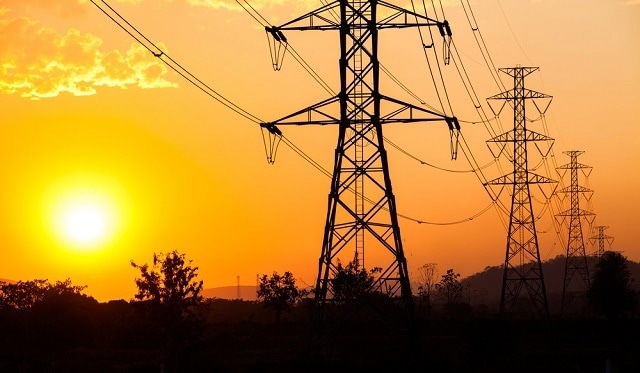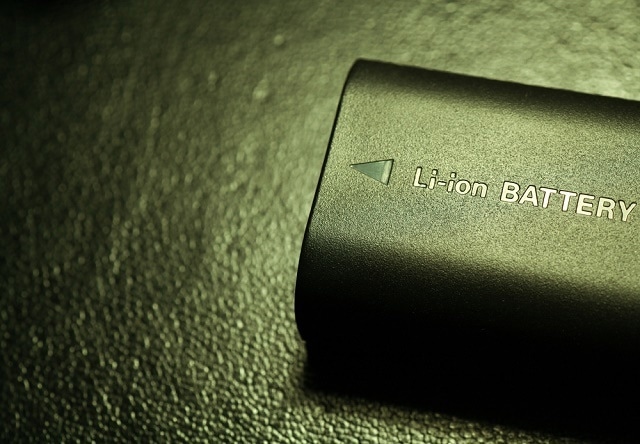
Image Credit: freedomnaruk | Shutterstock.com
Grid-based energy storage directly addresses one of the main issues facing renewable energy; renewable sources aren’t always available. The sun doesn’t always shine. The wind doesn’t always blow.
Energy storage solutions allow energy to be stored during sunny and windy periods, and be released when it is needed. It may sound like a simple concept, but there are a number of ways energy storage can be achieved.
1) Compressed Air Storage
Used in conjunction with a wind farm, a compressed air energy storage system draws in air, creating a high-pressure system in a series of large underground chambers. When the wind speeds slows or power demand surges, the pressurized air, typically mixed with a bit of natural gas, is released to power turbines or generators.
2) Pumped-Storage Hydroelectricity
A popular form of energy storage, pumped-storage hydroelectricity is typically designed to store excess power from the grid. When power demand lags, electricity from the grid is used to pump water up into a reservoir or lake. When demand surges, water is allowed to flow from the upper reservoir down to a lower reservoir. As it flows to a lower elevation, the water passes through turbines, generating electricity.
3) Advanced Rail Energy Storage
Devised by a California startup, Advanced Rail Energy Storage is a system that uses rail cars to reserve electricity. The unusual system uses excess grid energy to power axle-drive motors on rail cars, pushing mass uphill and against gravity to a storage yard.
To extract electricity from the system, the rail cars move back downhill. This time, the wheels acts as tiny generators, sending electricity back to the grid.
4) Flywheel Energy Storage
Flywheel energy storage systems store grid energy by converting electricity into kinetic energy in the form of spinning wheels. The wheels are held in a frictionless vacuum by a magnetic field to prevent a loss of energy, and when power is needed, the spinning can be slowed in a way that generates electricity.
This system offers a number of advantages over other energy storage systems, including low maintenance, long life, and low environmental impact.
5) Lithium-Ion Battery Storage

Image Credit: Janala Dharmasena | Shutterstock.com
Probably the easiest concept for people to understand, experts and officials are investing heavily in the development of large lithium-ion batteries to store power for when supply outpaces demand for electricity.
Lithium batteries weren’t developed for industrial use and the widespread, grid-base adoption of lithium battery storage faces three major obstacles: cost; the fact that they can be a safety hazard; and their limited lifespan.
6) Liquid Air Energy Storage
Liquid Air Energy Storage, or LAES, uses excess grid electricity to cool ambient air to the point it becomes a liquid. To extract electricity from the system, the liquid air is converted back to gas by exposure to ambient air or with waste heat. This expanding gas is then used to power turbines.
7) Pumped Heat Electrical Storage
Pumped Heat Electrical Storage stockpiles electricity by using it to drive a heat pump that moves heat from a “cold store” to a hot store," comparable to the way a refrigerator moves heat from its interior. To recuperate the energy, the heat pump is flipped, taking from the hot store and putting it in the cold store. This generates mechanical work that drives a generator.
One of the advantages of this system over others is that it has a much faster response time than other grid storage systems, acting within minutes.
8) Redox Flow Batteries
Different from lithium-ion batteries, which are solid state batteries, redox flow batteries use chemical reduction and oxidation reactions to store excess grid energy in liquid electrolyte solutions.
The main advantage redox batteries have over lithium-ion and other solid state batteries is their flexibility. The power rating and energy rating on a redox flow battery can easily be modified for a given application by simply changing the stack size or size of storage tanks holding the electrolyte solutions.
9) Superconducting Magnetic Energy Storage
A superconducting magnetic energy storage system stores electricity not as chemical, kinetic, or potential energy, but as a magnetic field. The field is created by the flow of current in a superconducting coil that has been cooled to below a critical temperature point. The electromagnetic field requires very little energy to maintain, and energy is released by discharging the coils.
The advantage of this system is that it offers the capacity for instantaneous discharge.
10) Methane
German researchers have developed a way to take the products of biomass gasification to produce methane. As a gas that can then be burned to power turbines, methane essentially serves as an energy store medium in this scenario. Energy stored as methane could easily be piped or shipped using existing natural gas infrastructure.
References and Further Reading
5 Energy Storage Solutions That Will Make Renewables a Viable Alternative to Fossil Fuels
Energy Storage: The Key to a Smarter Power Grid
Liquid Air Energy Storage (LAES)
Pumped Heat Electrical Storage (PHES)
Superconducting Magnets for Grid-Scale Storage
Can Methane Act as a Storage Medium for Renewable Energy
Disclaimer: The views expressed here are those of the author expressed in their private capacity and do not necessarily represent the views of AZoM.com Limited T/A AZoNetwork the owner and operator of this website. This disclaimer forms part of the Terms and conditions of use of this website.